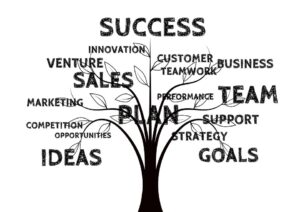Why an innovational culture is an essential ingredient for a successful business…
To me, innovation describes solutions or products daring to break accepted boundaries, or to take a voyage into unknown market territories. If you were to do a survey of people from different demographics, there would not be one accepted definition, but numerous.
The proof of this claim is when founder and CEO of Improvides Innovation Consulting, Nick Skillicorn, asked innovation experts to summarize what “innovation” means to them and they came up with multiple definitions.
Some experts such as author Stefan Lindegaard, say we need to “tone down our use of the word and the term.” Lindegaard rightly says companies “talk too much about innovation…” without translating novel ideas into action.
Other innovation experts such as top innovation blogger Paul Hobcraft, says innovation is “the fundamental way the company brings constant value to their customer’s business or life, and consequently their shareholders and stakeholders.” My personal favorite is Jorge Barba, partner at Blu Maya, an innovation consultancy company, who says innovation “is the future delivered.”
Defining what innovation means is one challenge, creating an innovation culture is another.
You may be wondering how to get started. Here are four great ideas to help create a foundation to build on:
- Challenge the conventional approach
Many leaders at the helm of businesses refuse to break with convention. They claim they have a set way of doing things, so why change now? Indeed, if it is not broken, why fix it?
What happens if their competitors take the opportunity to innovate and they remain rooted to the spot? Of course, the answer is their rivals are likely to move ahead, and make a meaningful impact, while they flounder. Sudheer Kiran coins the conventional processes of an “organization’s status quo.”
If you are a business leader that is looking to create meaningful change, you need to challenge the status quo of your organization. The longer you cling on to conventional processes, the chances are your company will “sink, rather than swim.”
Start challenging the conventional and build a culture of innovation that starts with you; the leader of the business! Remember you set the tone, not your competitors. It is up to you to keep an open mind, welcome new perspectives, and “constantly suggest new ideas” that are a break from your conventional processes. Lastly, and most importantly engage your team to put these ideas into action.
Sudheer Kiran, Digital Marketing Consultant and co-founder of the digital marketing agency DigitalVow, suggests business leaders need to ask themselves the following questions: What is not working and why? What are the ideas to fix it? How can we bring improvement to it?
- Understanding what wearing failure as a badge of honor really means
What does wearing failure as a badge of honor mean? It does not mean walking around wearing a name badge with Failure written on it. Rather this expression means applying what you have learned from past failures and then using these lessons to form future initiatives. Doing so will allow your business to convert failures into future successes.
As the famous American engineer and inventor, Charles F. Kettering once said, “An inventor fails 999 times, and if he succeeds once, he’s in. He treats his failures simply as practice shots.” That is why businesses need to promote “a neutral, nonjudgmental environment” that gives individuals the space to turn their mistakes into successes.

- How you learn from setbacks
As Kumar Mehta, bestselling author of the Innovation Biome, writing for Forbes says there are two main reasons why efforts at creating solutions, products, or services fall flat. The first is when a company is not able to produce a solution, product, or, service the way they initially envisioned. The second is the company’s “inability to get customer traction.” Customer traction is the growing number of customers “paying or non-paying who use or subscribe to your service or product.”
The first solution requires persistence, if you cannot get your product done right the first time, you try until all components, or pieces fit into place. Why not ask teams from other departments, from different backgrounds to brainstorm and come up with solutions? Innovation is demonstrated to happen when people with different perspectives “clash and co-mingle.”
If the new solution fails to live up to its promise in the marketplace, the first thing a business leader should do is evaluate the customer’s experience. You need to ask the following question:
Did our new product offer a marked improvement in customer experience compared to past offerings?
As Mehta says, one of the reasons why innovations fail to captivate the marketplace is customers do not see the value of your product over competing products. Here, companies need to consider the new product’s price point, the lack of customer awareness, and other things that may block the effect of your new product.
- Breaking through barriers that impede innovation
One of the problems for larger organizations is their departments are spread throughout different buildings or sections of a building. The departments hardly see one another so the opportunity to share ideas and collaborate is minimal. Rather than different divisions of a business sharing innovative ideas, they guard information; this creates a rivalry or unhealthy competition. It is only natural for a siege or silo mentality to develop. In these gigantic organizations, it is up to the leaders to tear down barriers that prevent internal communication, while rewarding employee cooperation.
One great example is the cellphone company Nokia who has an informal rule that their employees eat lunch together in the cafeteria. Nokia is a great example of an organization that encourages employees from different departments to mix and share ideas.
Another example of a leadership removing barriers is the team at NASA. To accomplish this they asked their employees to generate new ideas. Their employees came up with “almost 300 recommendations.” Some of these suggestions promoted increased idea generation by providing time, funding, recognition, and reserved “physical space for innovation”. Other employee’s ideas concentrated on minimizing “process requirements for innovations, for instance, low-cost missions and giving special treatment to high potential technologies.”

The way forward is to embrace a culture of innovation
To create a business that thrives is one that embraces innovative ideas. Innovation cultures fly in the face of regimented processes and leadership styles. Business leaders need to balance tradition by creating an environment that will foster innovation. As an organization in an ultra-competitive climate, the goal has to be to challenge convention. Among the biggest challenges for any company, big or small is to promote an environment that allows for failure. Today, the largest organization try, fail, and then try once more. Ultimately, one of the largest barriers to innovation is breaking down walls and promoting cooperation. Organizations such as Nokia and NASA are clearing the way for employees to share ideas and to make a meaningful difference to their organization’s future.






